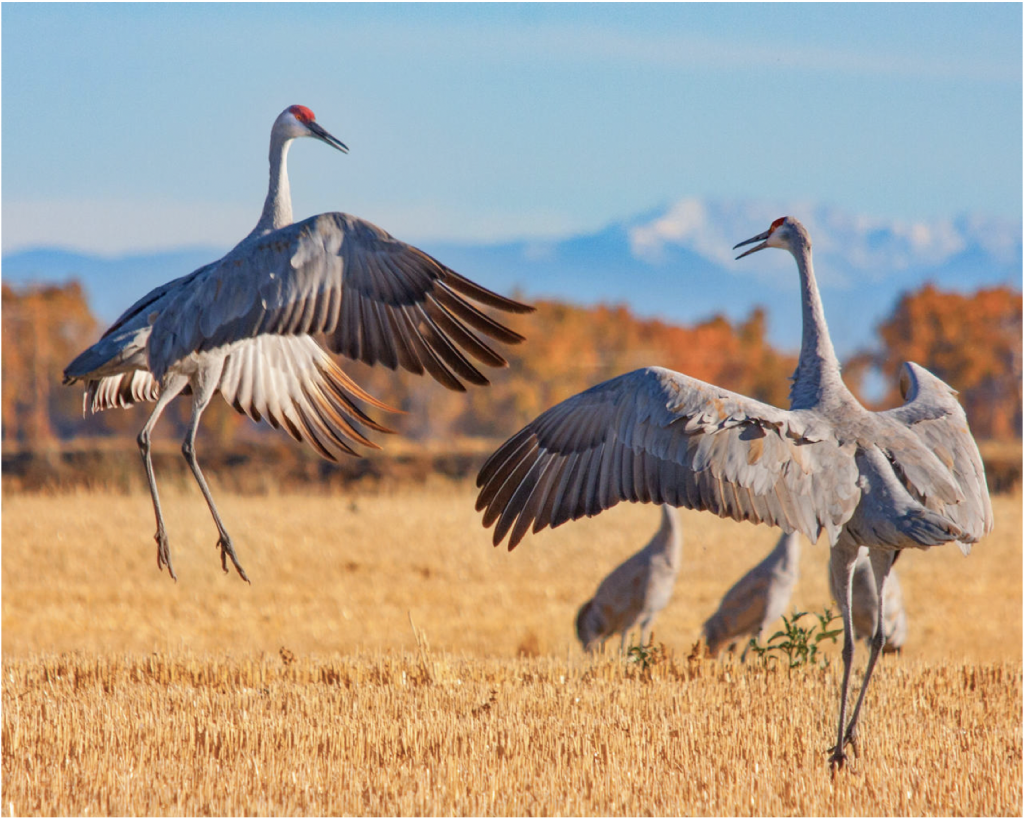The Importance of landscape connectivity for wildlife

For generations, the San Luis Valley has astounded both locals and visitors with its abundant wildlife and unrivaled scenery. From the San Juans to the Great Sand Dunes, there is perhaps no better place to witness the raw beauty of our state. Thousands of sandhill cranes come to the valley every spring on their migration. Like many bird species, they migrate over thousands of miles from Mexico to the northern tundra of Canada. The cranes visit the San Luis Valley in February and March before traveling onward to Nebraska or Yellowstone National Park.
Their beauty and gracefulness is such a natural spectacle that for nearly four decades bird watchers and outdoor enthusiasts have flocked to our valley’s annual Monte Vista Crane Festival. However, despite that love and the general appreciation most of us have for nature, wildlife – and our winged friends in particular – has never been more imperiled than today. Since 1970, we’ve lost one-quarter of all birds in North America. That’s approximately 3 billion less birds in the sky than 50 years ago. Part of this problem comes from the ruin of wild spaces. In Colorado alone, we’ve lost more than a half-a-million acres to development. This land use is suffocating biodiversity on land and in the air.
Thankfully, there is a plan that can protect an abundance and diversity of species: We need to protect 30 percent of the world’s land and water by the end of the decade. Sure, reaching this goal by 2030, which is colloquially known as the “30 by 30 Resolution”, just introduced by Senator Michael Bennet, is ambitious, but it’s also attainable if we start taking immediate steps now.
At present, Colorado - despite being roughly one-third public land - has just an estimated 10 percent, or roughly 6 million acres of its total land adequately protected. This means that we have to protect another 14 million acres to reach 30 percent by 2030. For the San Luis Valley, that should include protecting and expanding wilderness or creating other special designations for our valley’s public lands.
That said, developing protected areas is only one of the many ways we reach our target. Private landowners can also play a major role in conservation by ensuring safe migration corridors for birds and mammals. A federal bill called the Wildlife Corridors Conservation Act would establish a wildlife movements grant program to encourage the movement of wildlife across their habitats.
In our region, these habitat areas that connect larger protected areas to each other can play a meaningful role in keeping herds of elk and bighorn sheep healthy and prosperous. When land is broken up into disconnected pockets of nature, it leads to disease and a limited gene pool, making these species more vulnerable.
The San Luis Valley has long served as a wildlife migration corridor and we should incentivize landowners in the valley to continue to prioritize that important role. We know how to do this. When it comes to local wildlife corridors that could serve as perfect candidates for protection, many were already identified during the Rio Grande National Forest Planning process. They include: Antora Meadows, Elkhorn, Saguache Creek, Pole Creek, Sheep Mountain, Snowshoe Mountain, Wason Park, the North Fork of Rock Creek, Lake Fork, Wannamaker/Deep Creek, Summit Peak, Adams Fork/Three Forks and Elk Creek, which is next to the South San Juan Wilderness.
In addition, approximately 47,000 acres in the lower reaches of the Sangre de Cristo Mountains have been recommended as lands that could help contribute to the 30 percent total.
Turning these areas into corridors can be a win-win for all members of our community. For local landowners, it can occur by incentivizing such acts as reducing crop production in a drought.
This kind of management supports seasonal wetlands of the valley that have become valuable and critical habitat for migratory birds and refills aquifers. We should provide incentives to landowners to protect their land as a shared resource with wildlife - like the sandhill cranes - which would help them contribute to 30 by 30.
Collaboration between agriculture and conservation has a history of success in our own community. For example, when the Great Sand Dunes was upgraded to a national park status in 2004, it was a boon for the area. In 2018 alone, visitors to the park spent more than $27 million in nearby communities and supported nearly 400 jobs. However, it is still vitally important to protect wildlife and nature for its own sake - we are running short on wild places.
Residents of the San Luis Valley have a unique opportunity to help achieve our 30 by 30 goals by leaning into wildlife corridors. The fact that we bear witness to the migration of the sandhill cranes, along with hundreds of other species of birds, should be a reminder of just how connected our valley is to our continent’s vibrant biodiversity.
To ensure future generations can experience this important connection to nature, we must get Colorado’s Sens. Michael Bennet and John Hickenlooper to prioritize the protection of the important landscapes of our state by passing the Wildlife Corridors Conservation Act. It’s what’s right for our valley, state and country.



